Background
- Off: The Background is not changed for rendering
- Render Settings: The camera is using the global Background settings from the Render Settings dialog. This is the default mode.
- Override: The local Background settings from the camera dialog are used, even if the Render Settings are configured in another way.
This setting determines at what point the color or background image is activated during rendering.
- In-Render: The background color or image is already used during object rendering and is therefore subject to the same exposure settings and color corrections as the other objects in the scene, for example. All lens effects will get applied to the background image as well. If you like to exclude the background from being affected by refractive materials or blur effects, deactivate the Affected by Bent Rays option.
- Pre-Composite: The background colors become visible and active only after the rendering is complete and the post effects are calculated. In this way, a background image can still influence the calculation of bloom or flare effects, for example, but will also exclude the background image from the sampling for antialiasing.
- Post-Composite: The background colors are faded in only after the rendering and post effects have been calculated. Exposure or color corrections, as well as other post effects, can therefore no longer change the background colors.
In the example images below take note that while the In-Render and Pre-Composite types can look very similar, only In-Render is affected by depth of field and transmissive materials. All the while, Post-Composite is not affected by any camera effects.

|

|
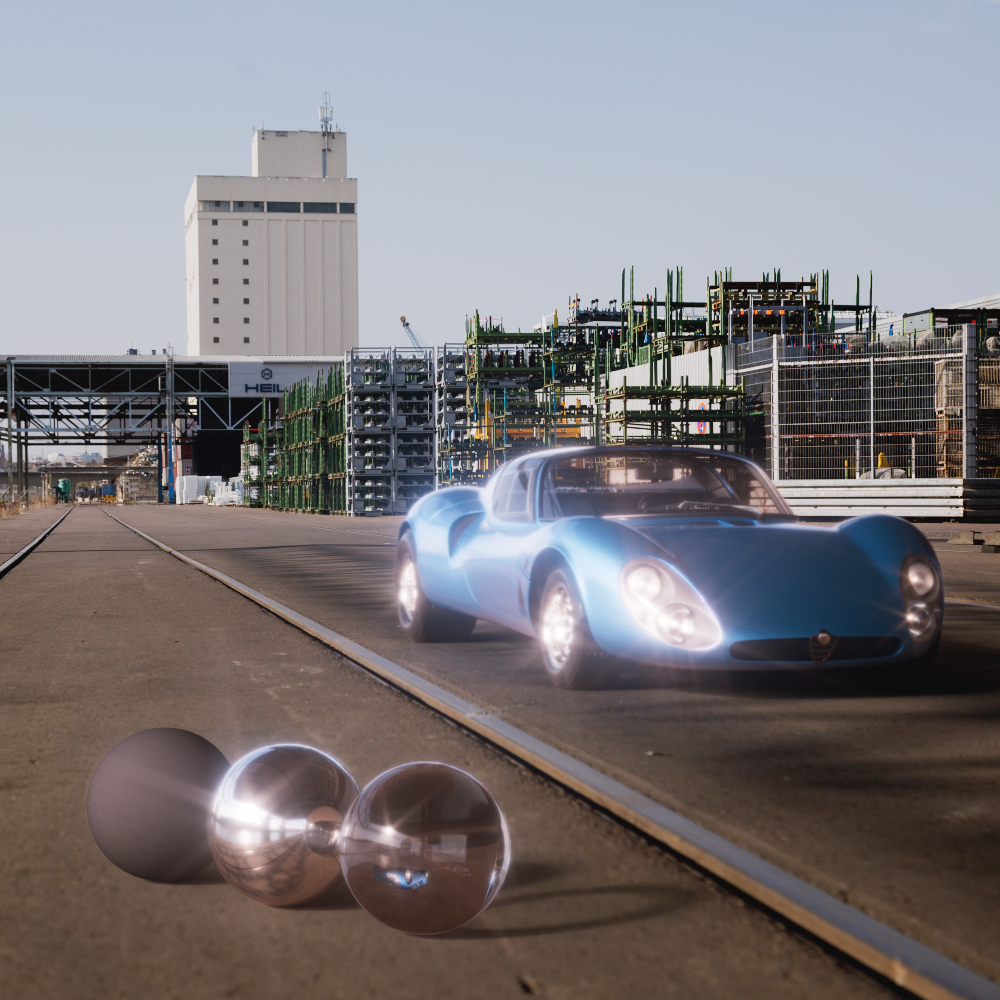
|
| Type: In-Render | Pre-Composite | Post-Composite |
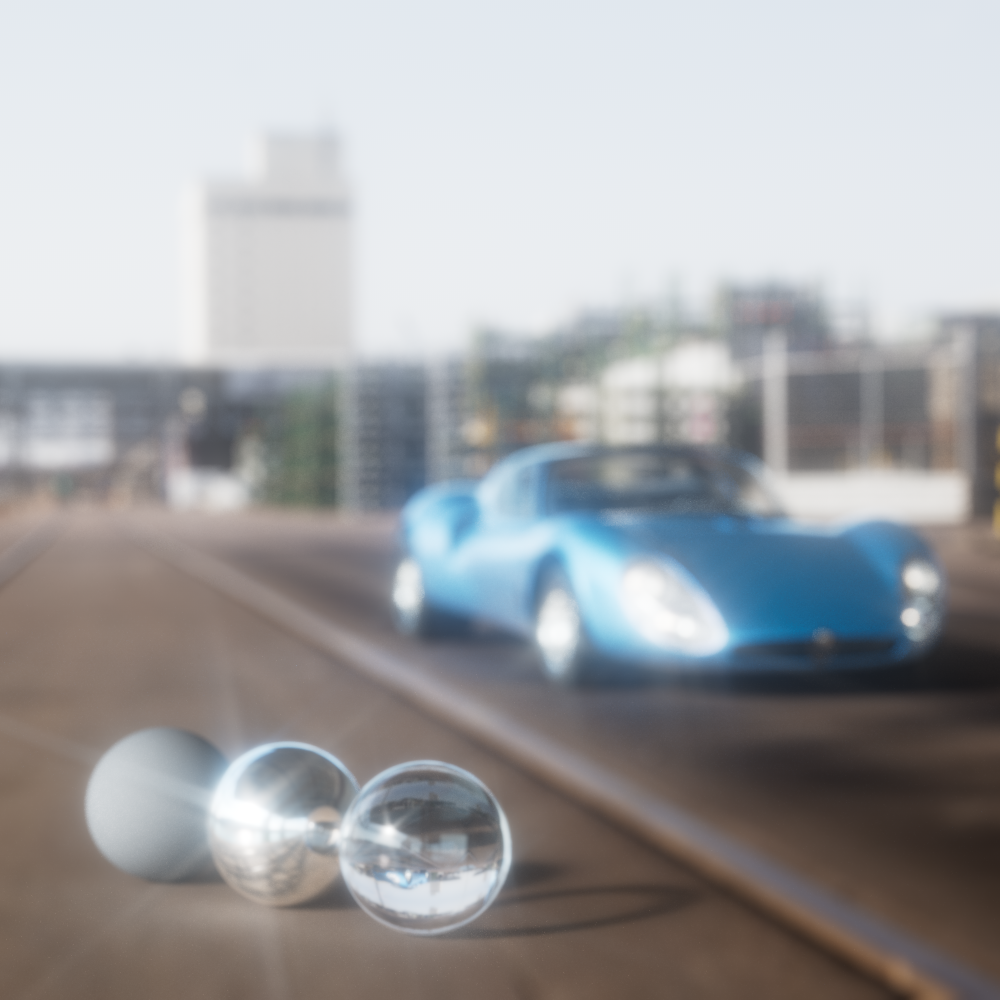
|
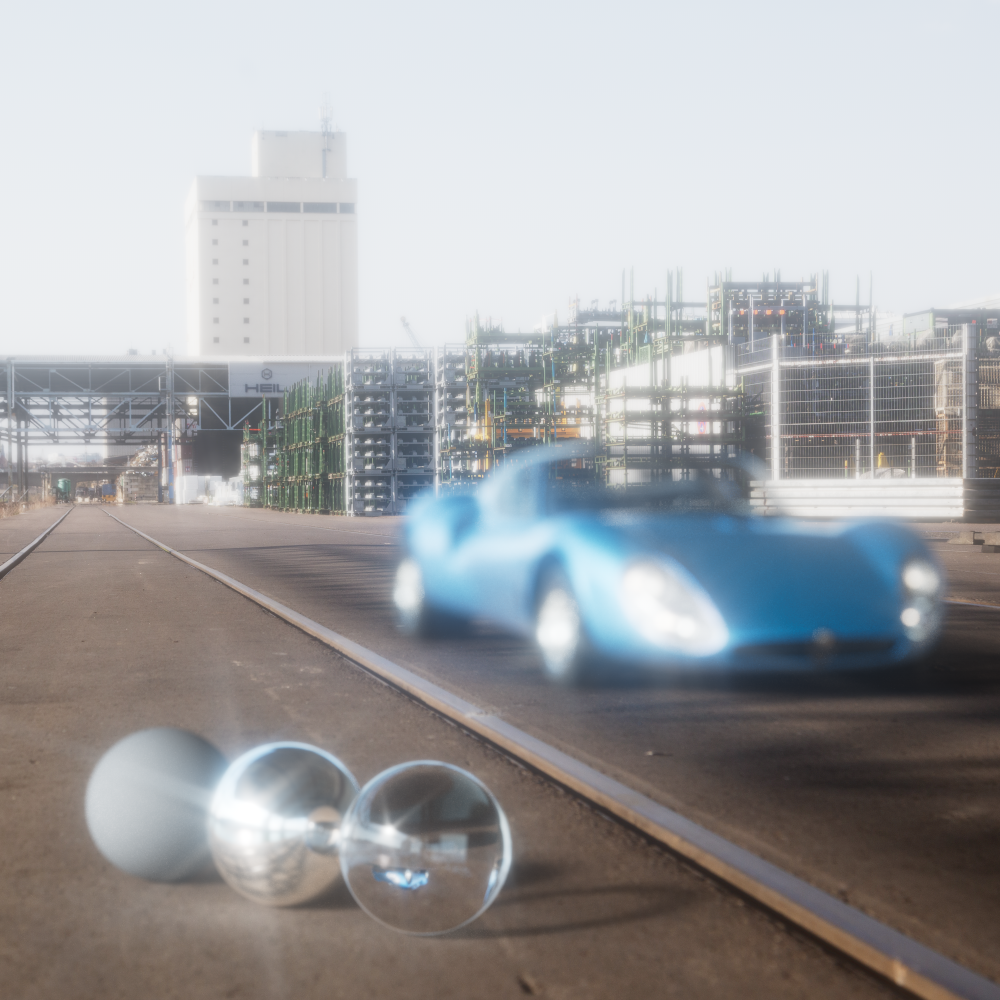
|
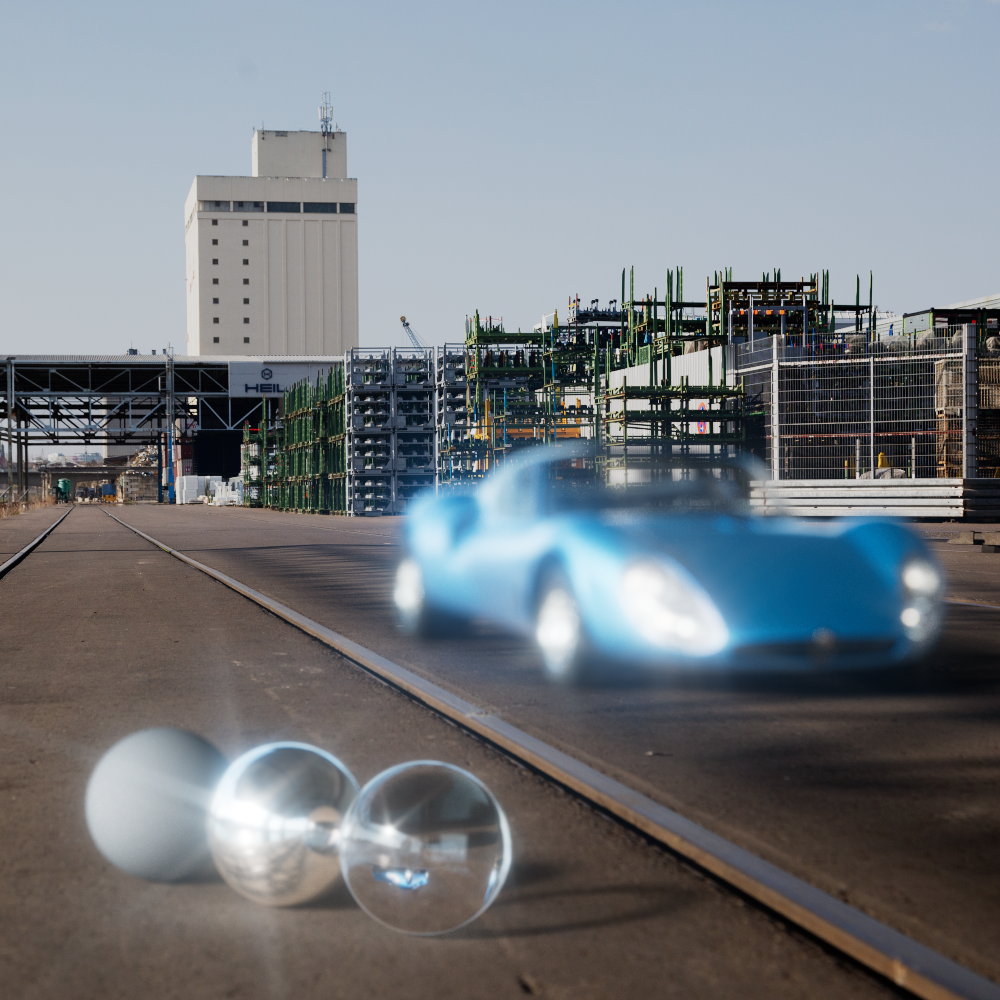
|
| Car model by Luis Lara and Maxime Truchon HDRI and Backplate by Apex Automotive |
||
This option is only available with the Type In-Render. If active, the background is rendered like a normal object in the scene and is therefore also subject to changes, e.g. when viewed through a refractive object or when rendered with blur. With this option turned off, the background is always rendered unchanged.
In the example images below notice how the background is bent by the transmissive glass sphere and car windows or blurred by depth of field when enabled. By comparison, the background is completely clear and the rays are not bent by transmissive objects when disabled, instead they pass right through and only the actual 3D scene is affected by these types of effects.
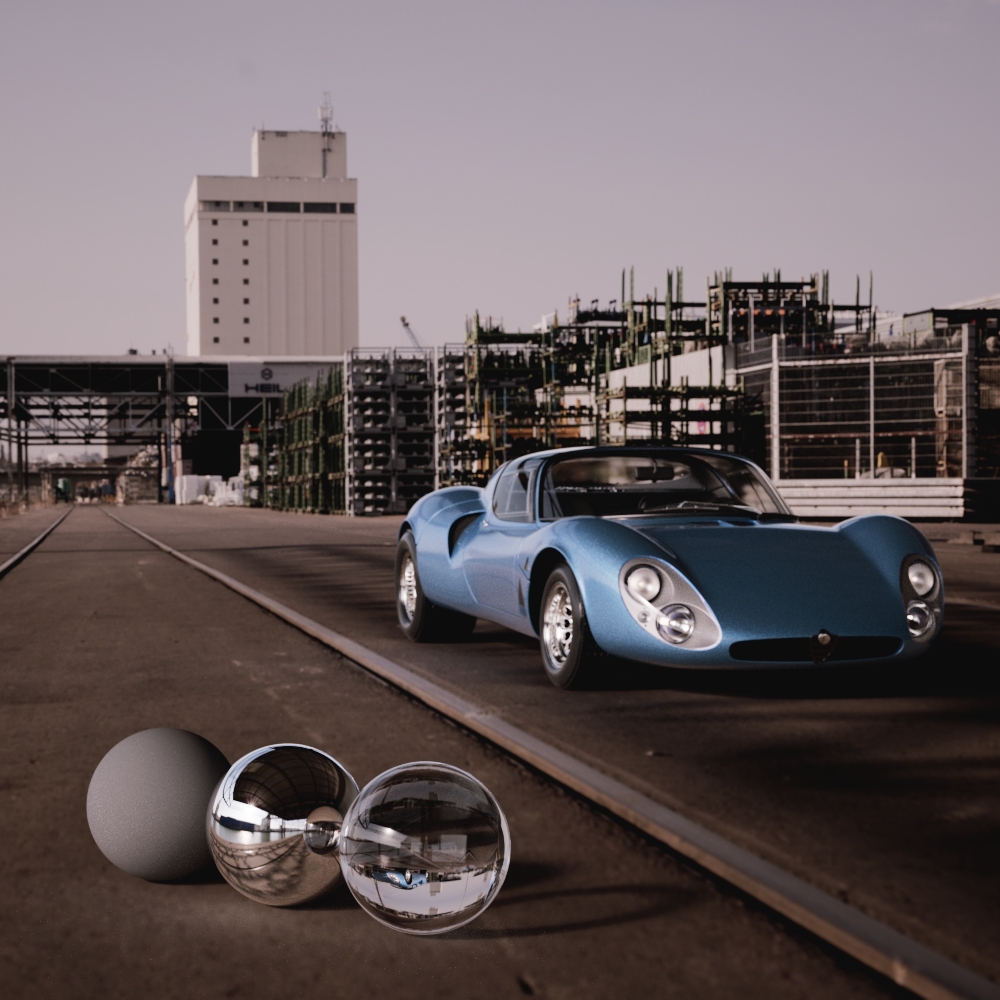
|

|
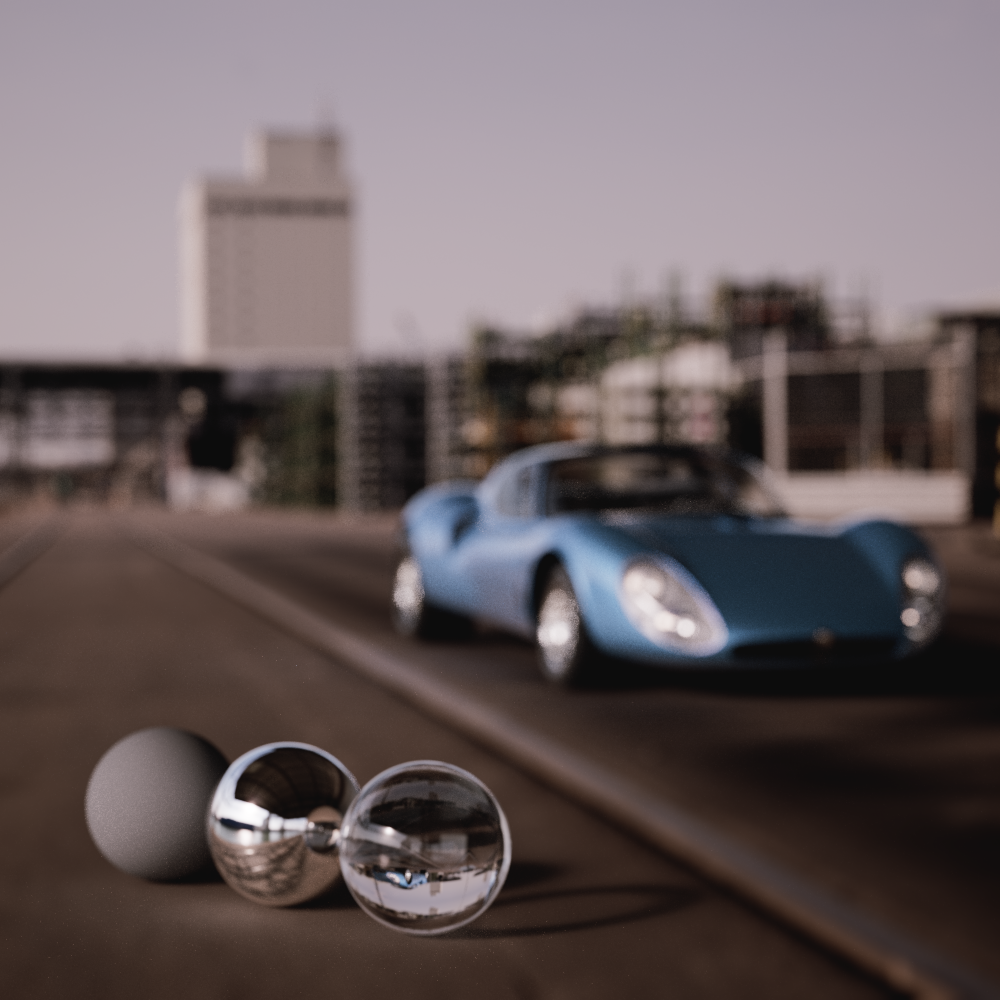
|
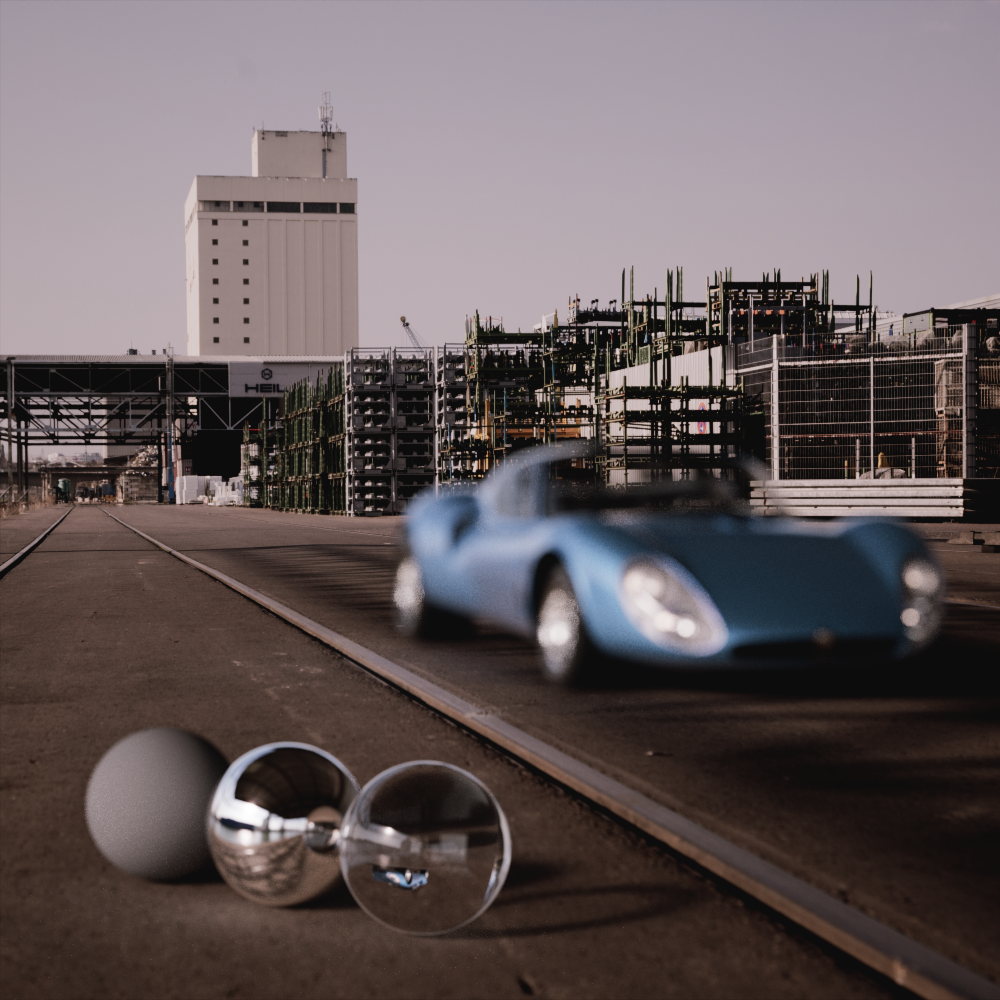
|
| Affected by Bent Rays: Enabled (default) |
Disabled | Enabled (default) | Disabled |
This is the plain color used in the background of the rendering.
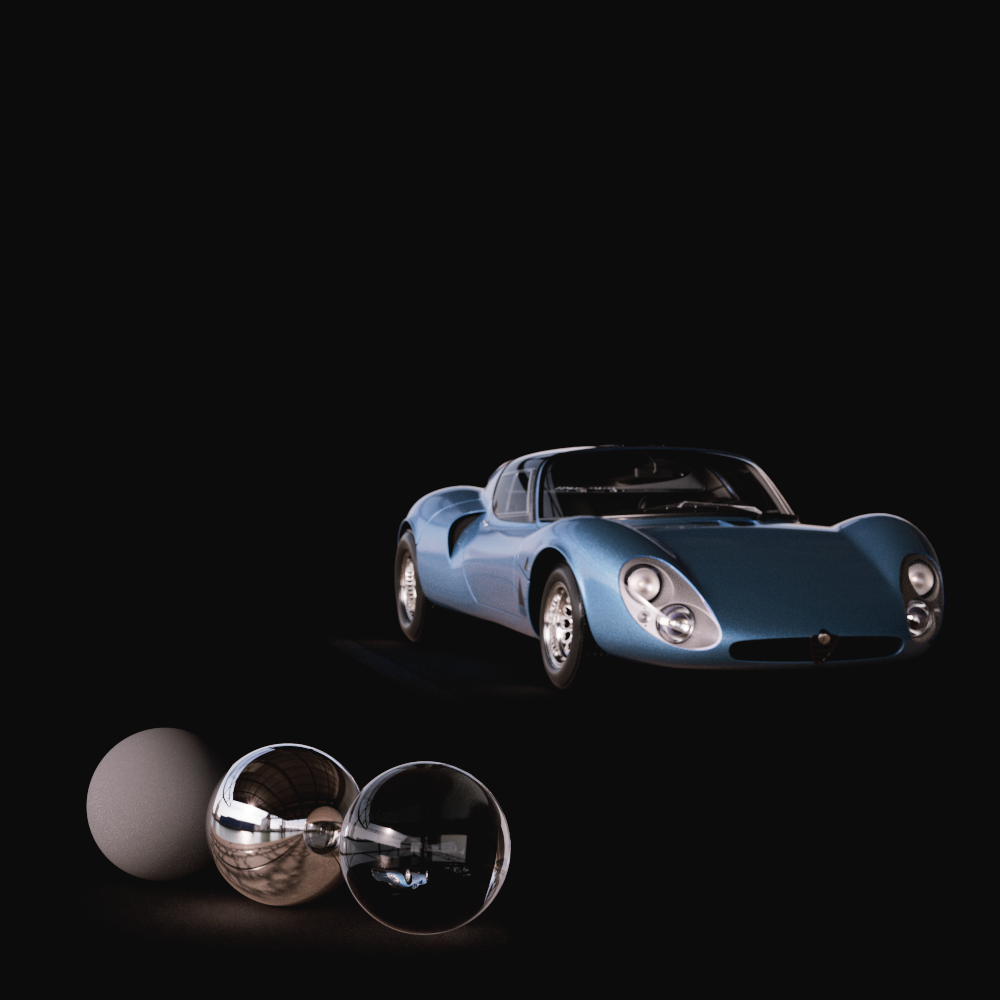
|

|
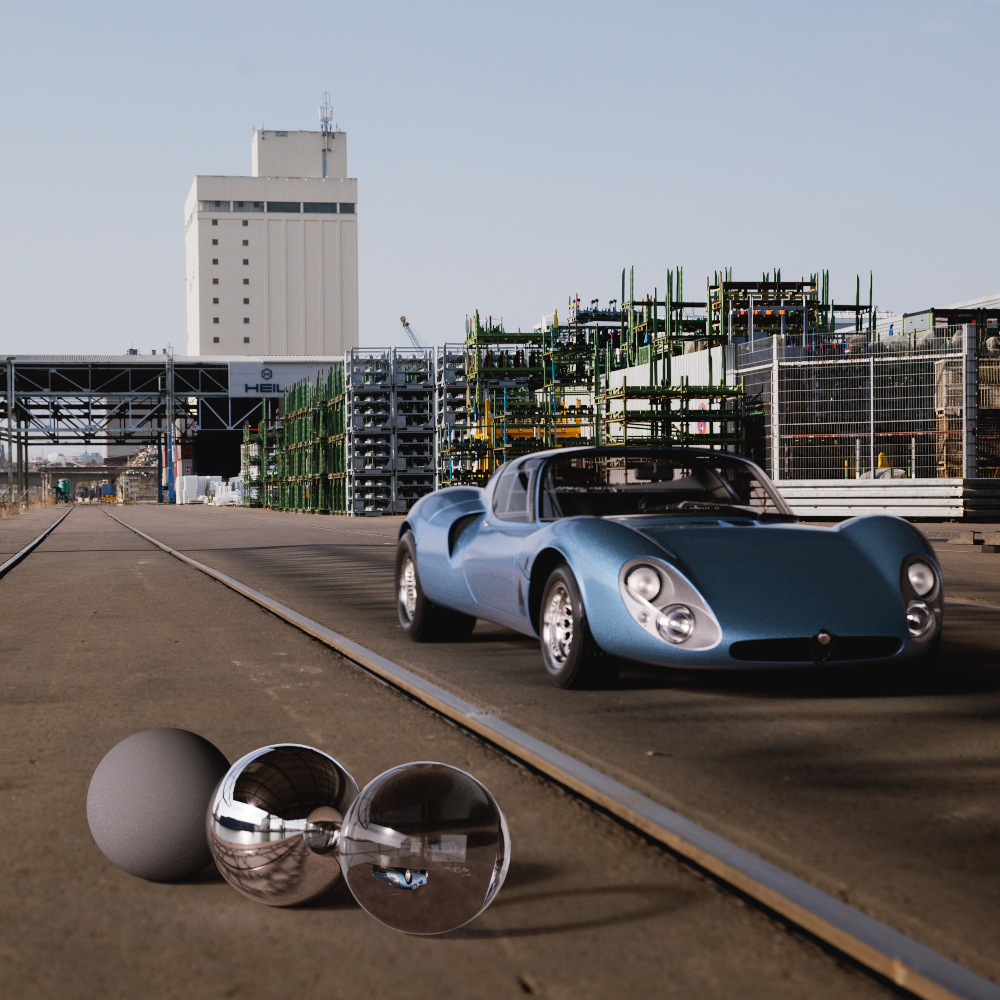
|
| Background Color: Black (default) | White | Image |
An image loaded here replaces or covers the solid Color of the background. The selected Color may still be visible in the rendering if the background image does not cover the entire rendering (see Frame setting) or if the loaded Image has an alpha channel.
If the loaded background image contains an alpha channel, this can also be read out with this and thus makes the image transparent in the corresponding places or even cuts out entire image parts.
If you have loaded an Image for the background, this setting adjusts the scaling of the image in the rendering. This is only relevant if the width to height ratio of the image does not match the aspect ratio of the rendering:
- Stretch: The width and height of the Image are changed to match the aspect ratio of the renderings. The background image will cover the entire background in any case. However, it may happen that the image appears distorted.
- Crop:The background image is scaled evenly to fit the longest side of the rendering. For portrait rendering, this is therefore the height of the rendering, and for landscape rendering, it is the width. The image portion along the shorter side may overhang the rendering and will therefore be truncated for the rendering.
- Fit: The background image is scaled evenly to fit the shortest side of the rendering. This always leaves the entire background image visible in the rendering, but there may be areas that are not covered by the image. The plain background color is then displayed there.
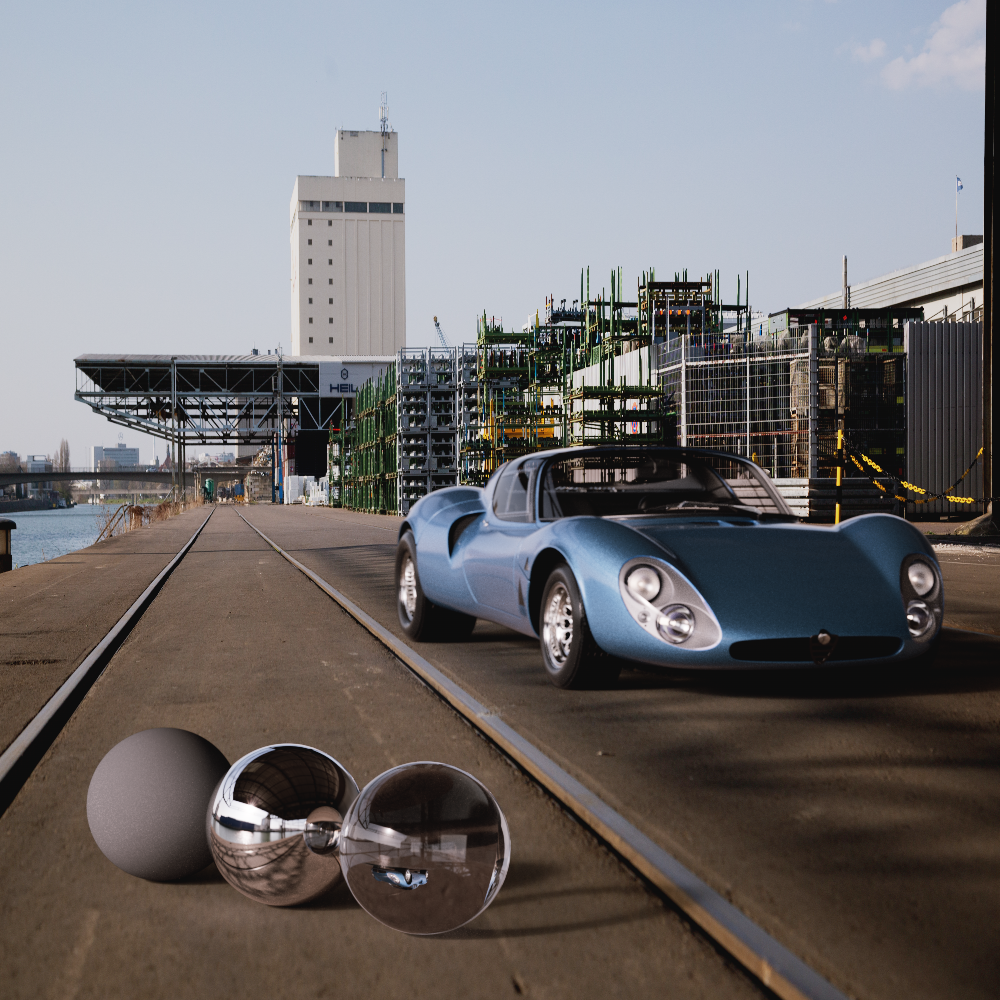
|
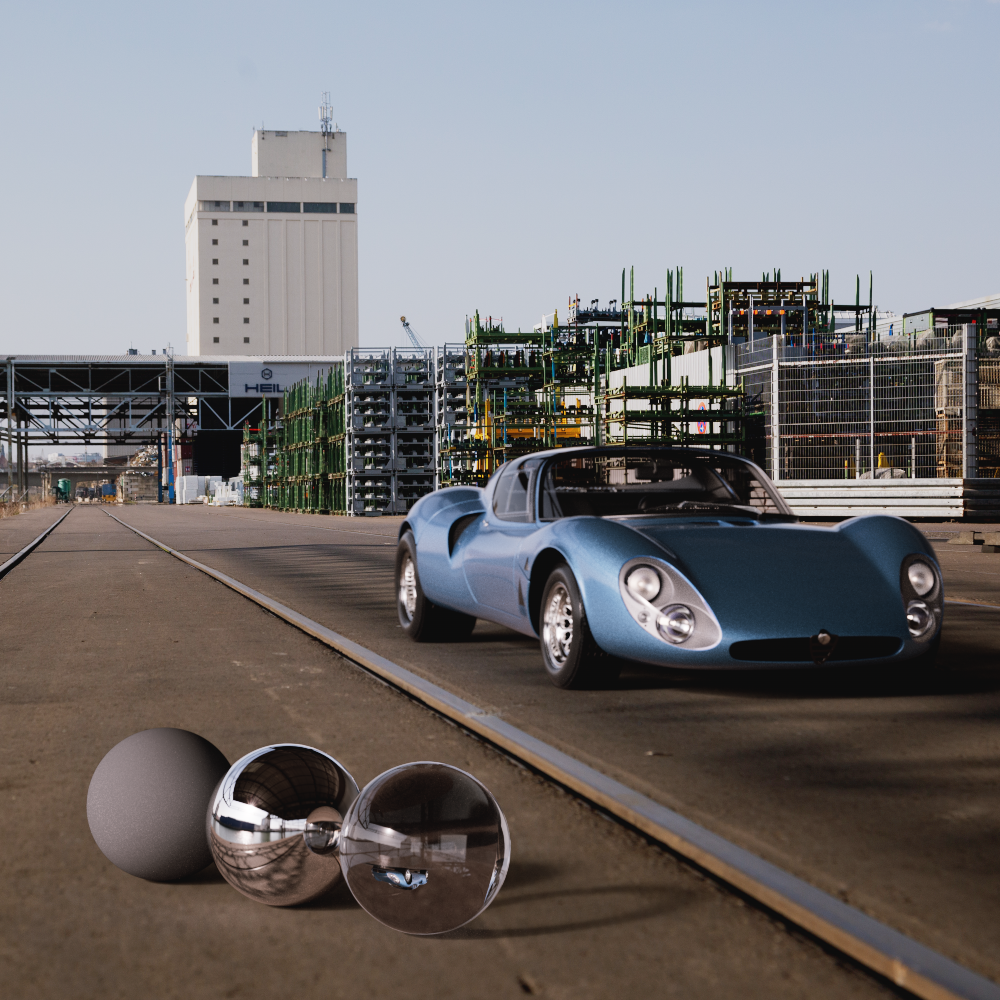
|
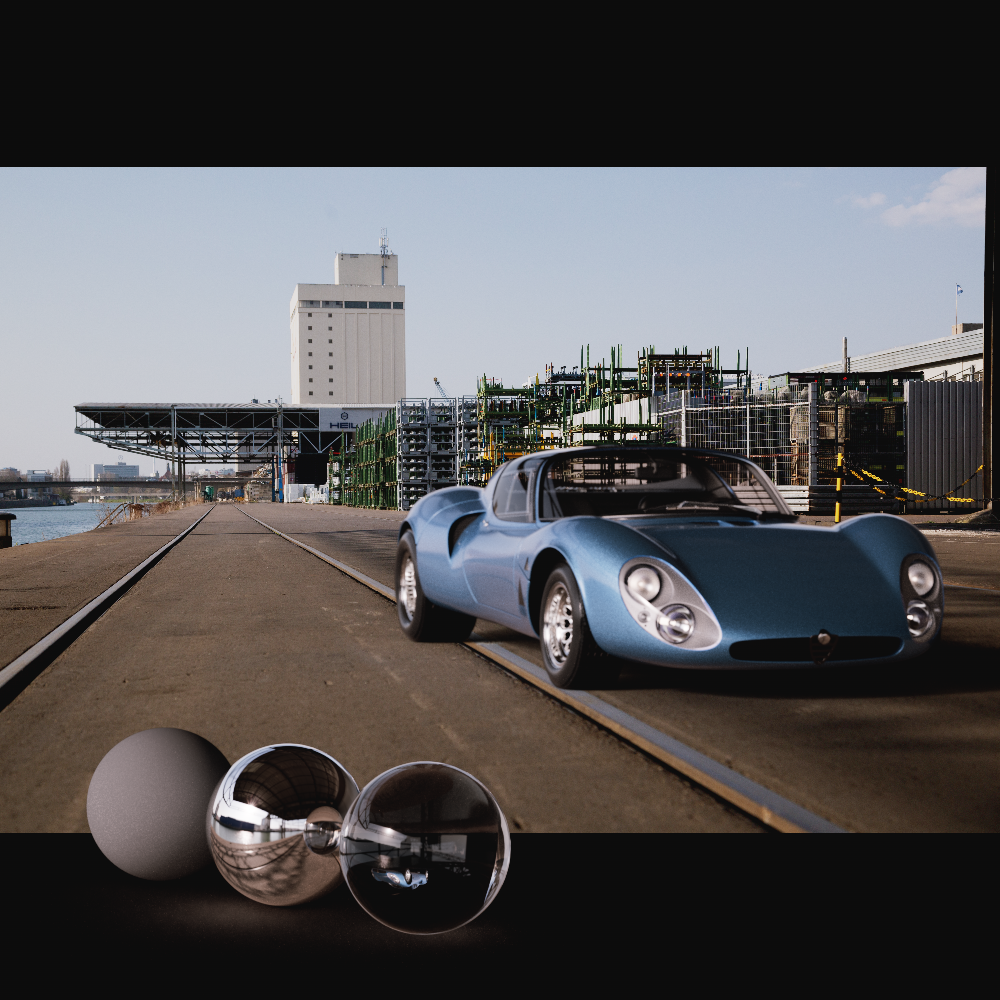
|
| Frame: Stretch | Crop | Fit |
Allows you to move the background Image horizontally. In the areas that become free as a result, the plain background color becomes visible.
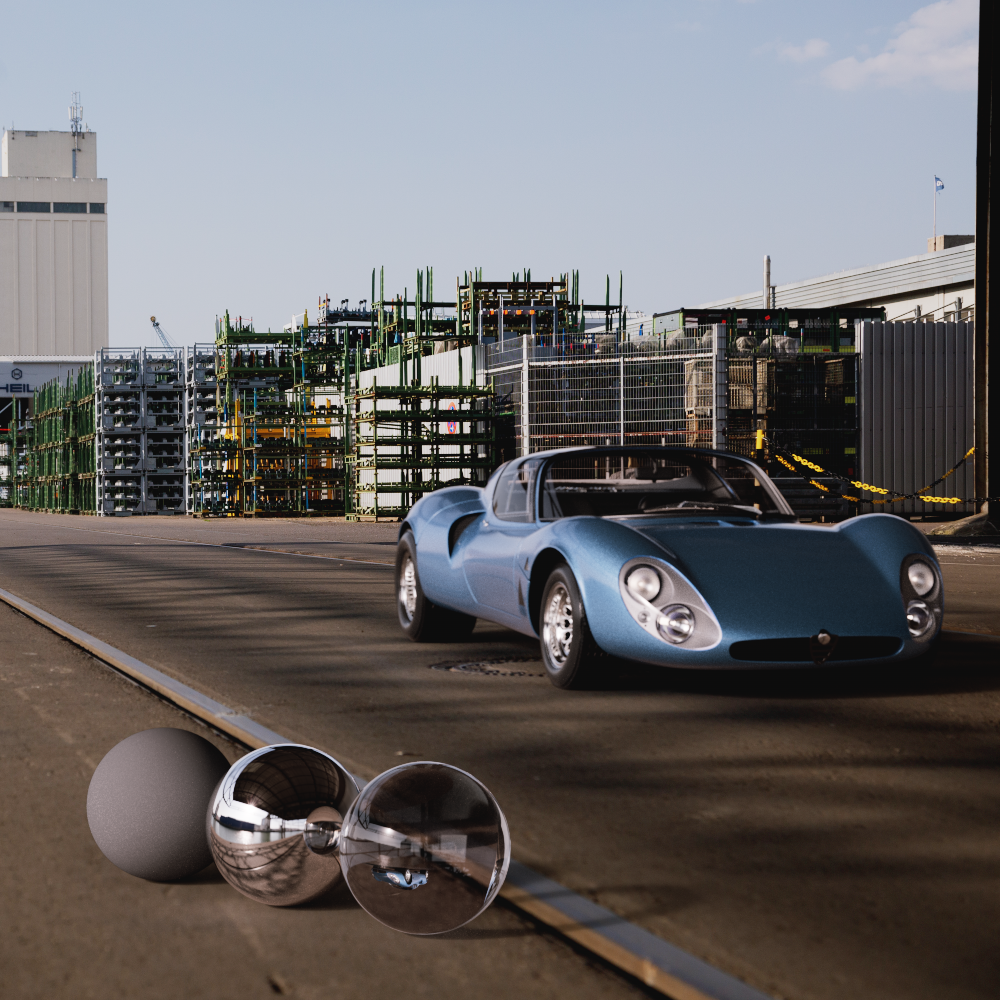
|
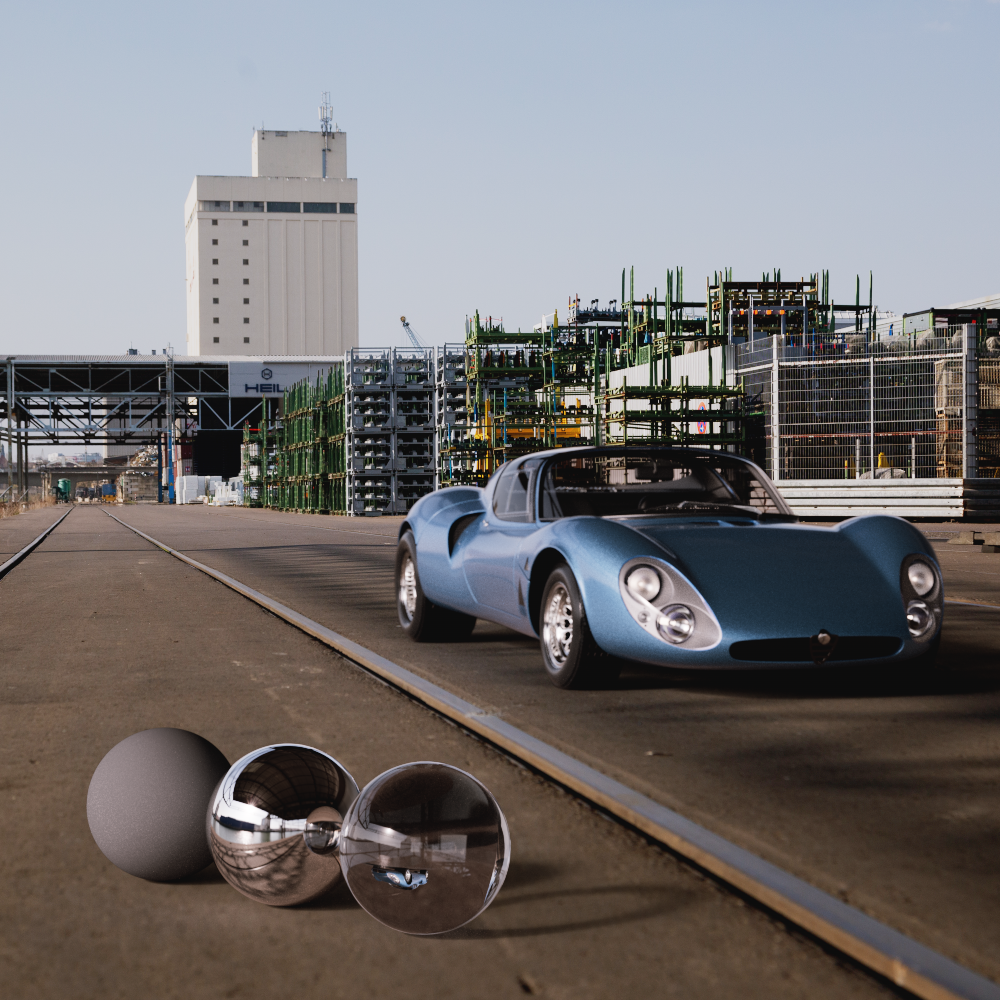
|

|
| Offset X: -20 | 0 (default) | 20 |
Allows you to move the background Image vertically. In the areas that become free as a result, the plain background color becomes visible.
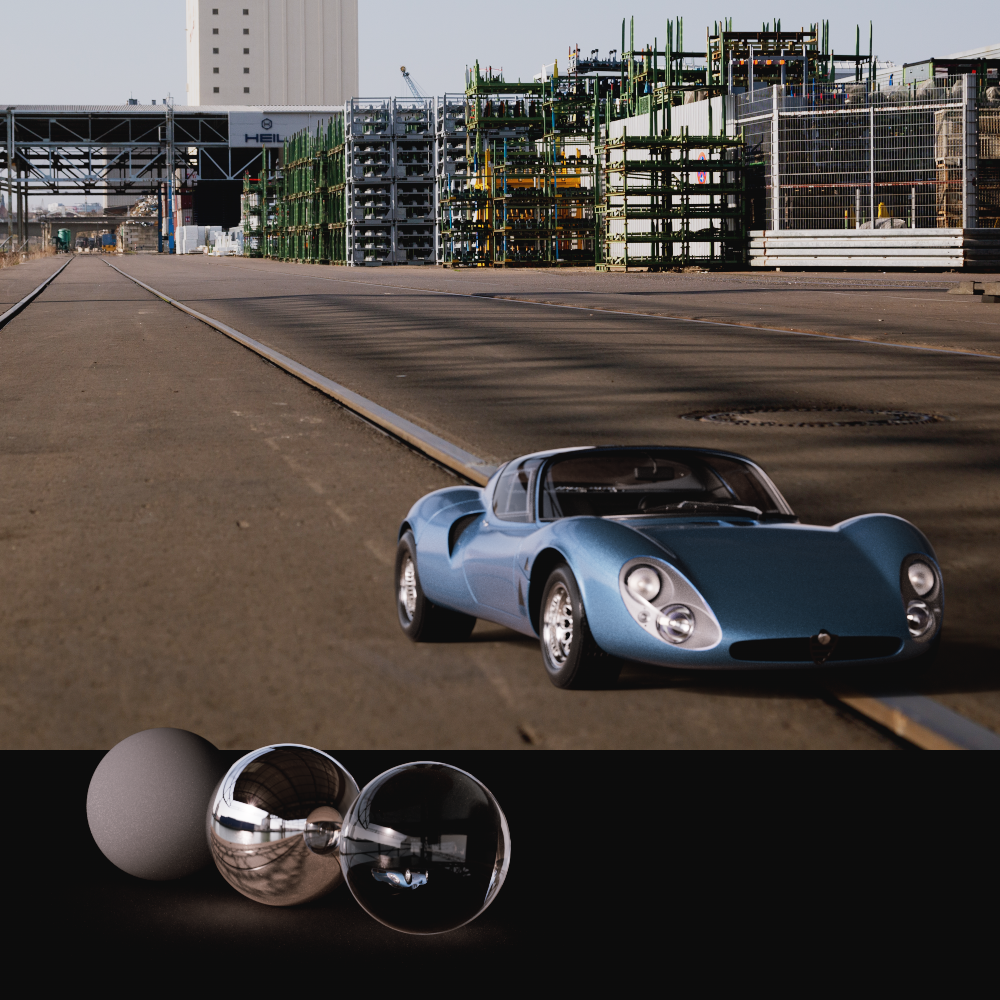
|
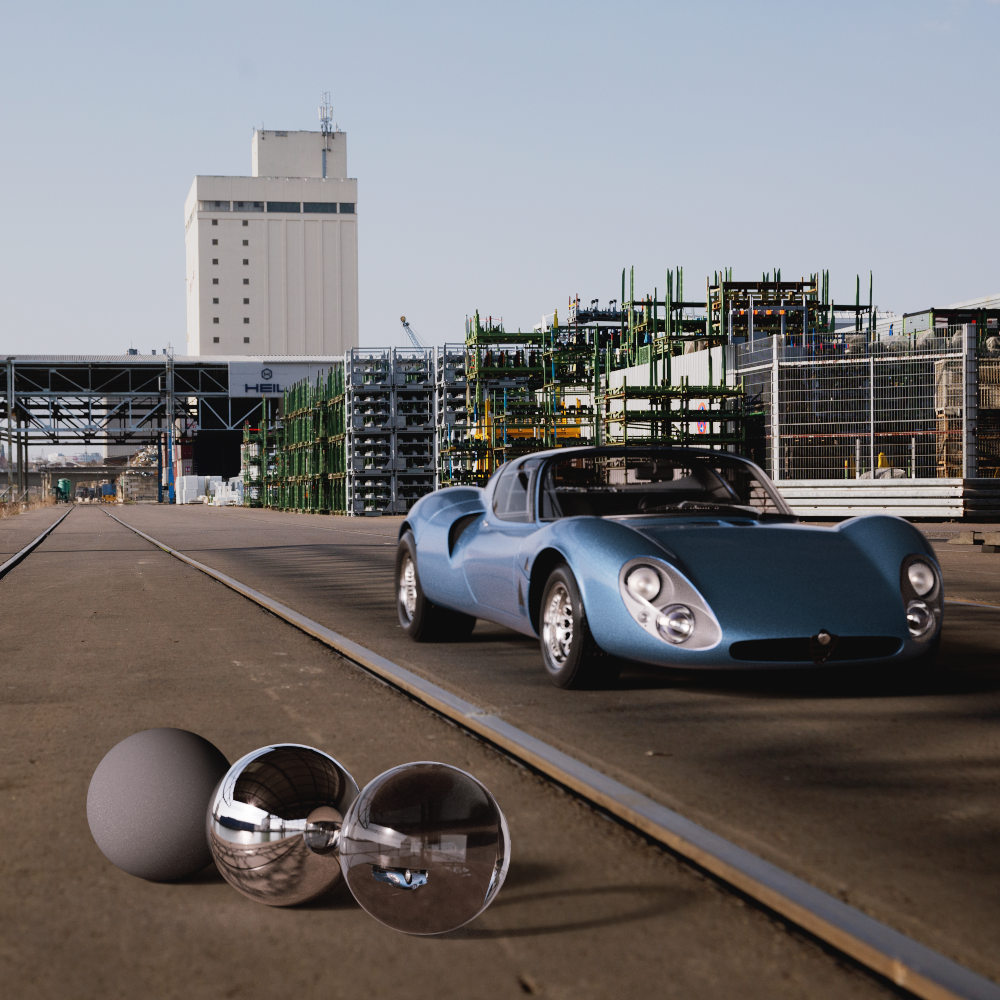
|
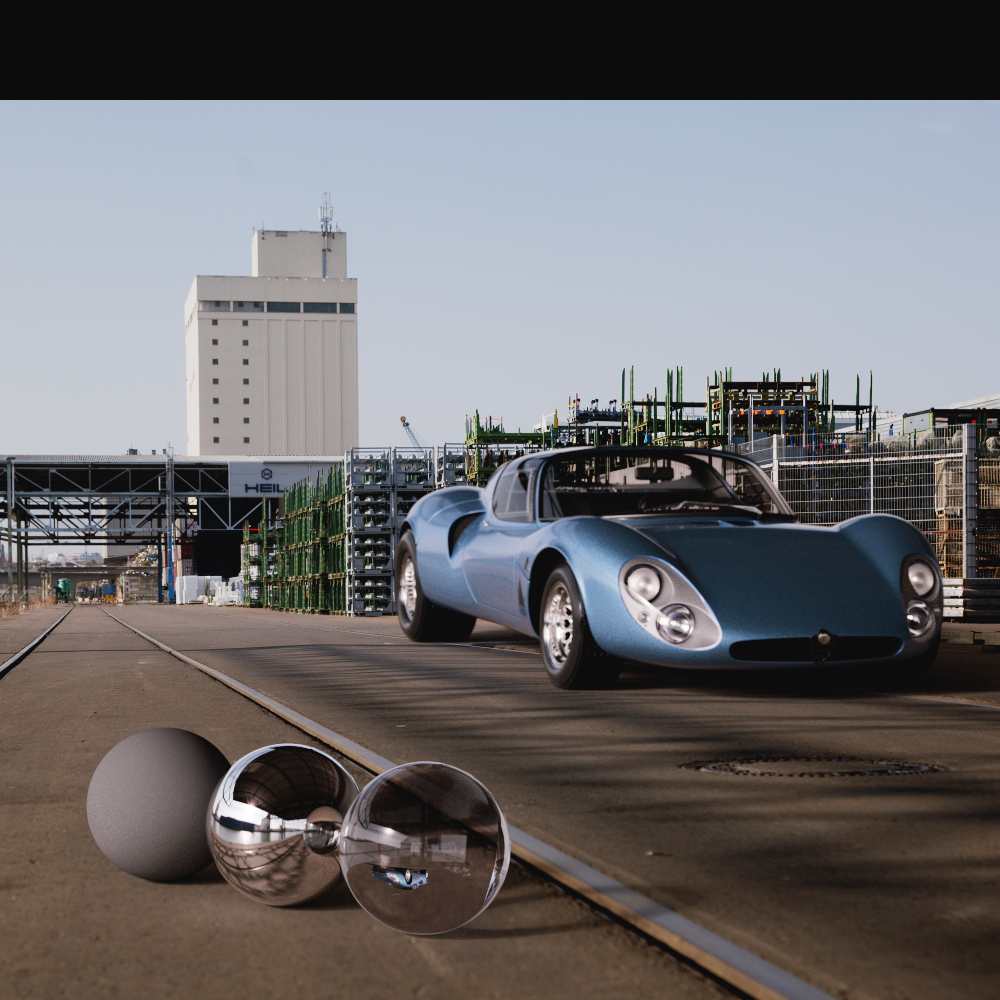
|
| Offset Y: -25 | 0 (default) | 10 |
Changing the Gamma value lightens or darkens only the midtones, without significantly affecting the highlights and depths. This means: Black remains black even after a Gamma change, white remains white.
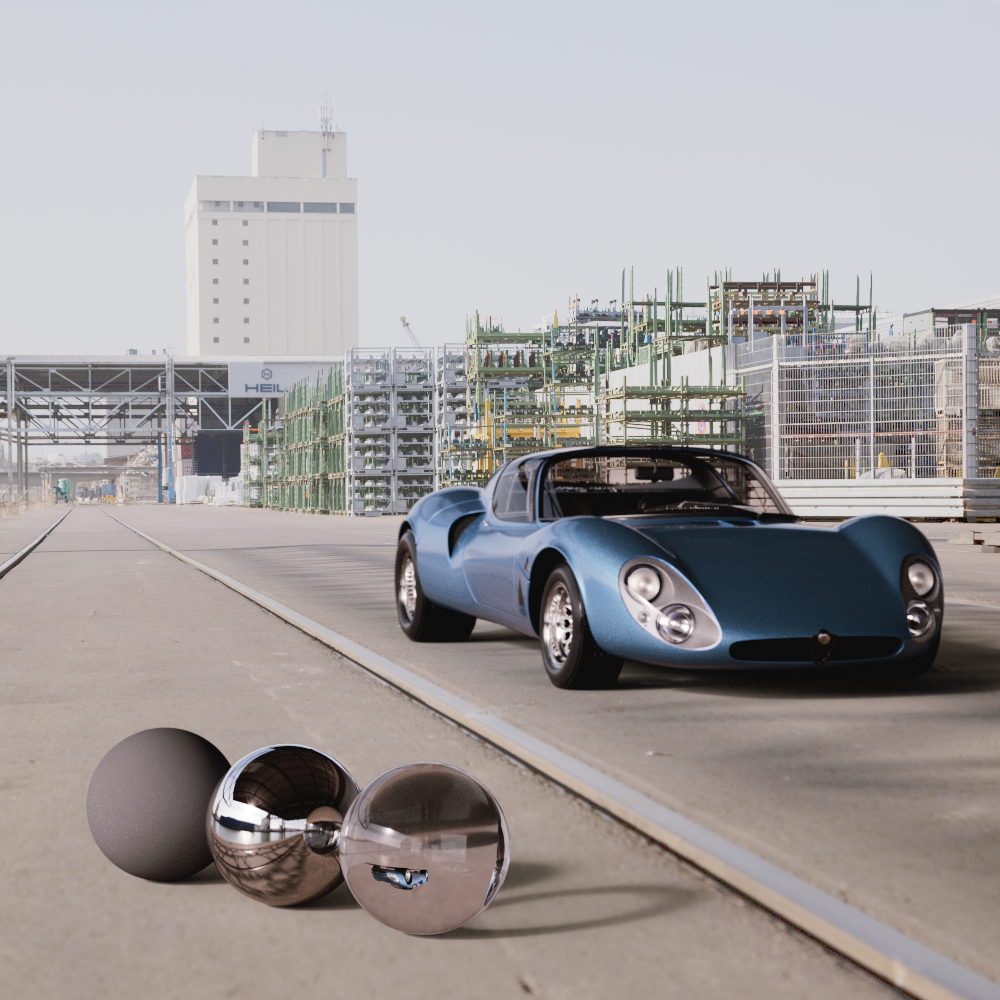
|
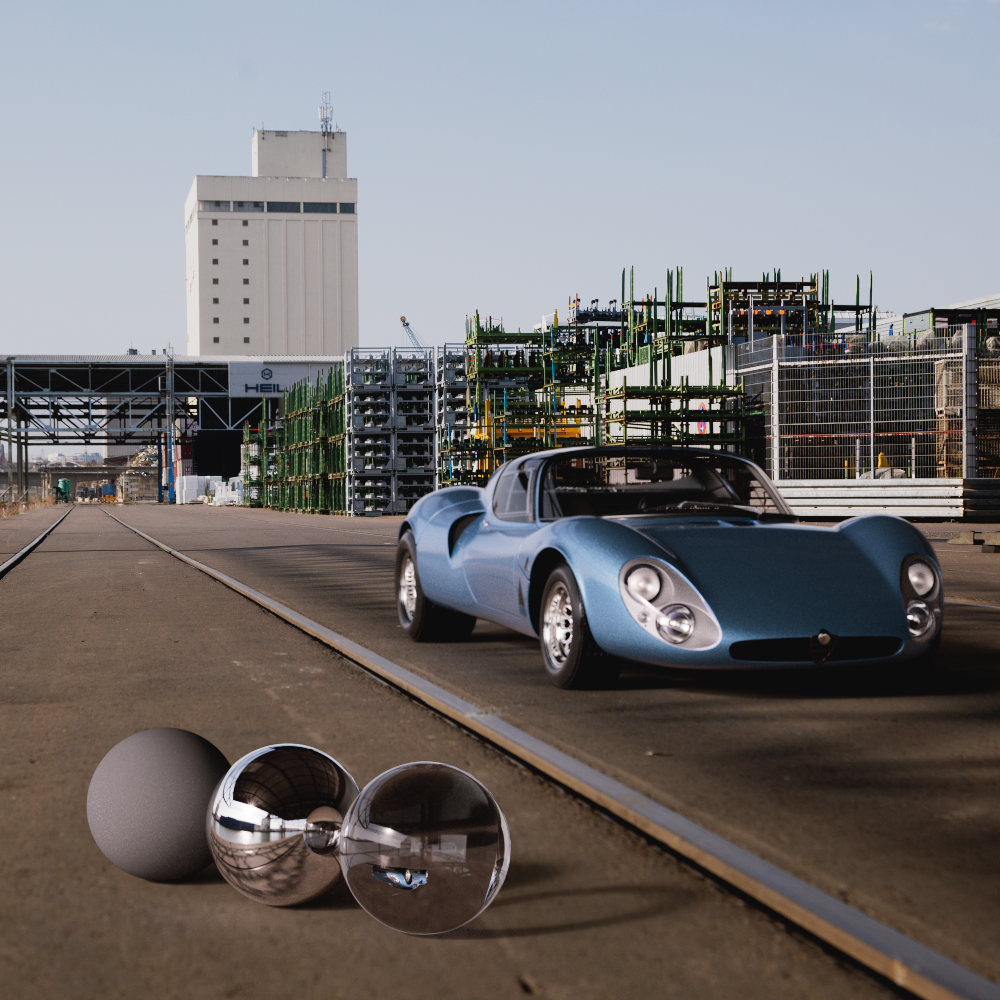
|
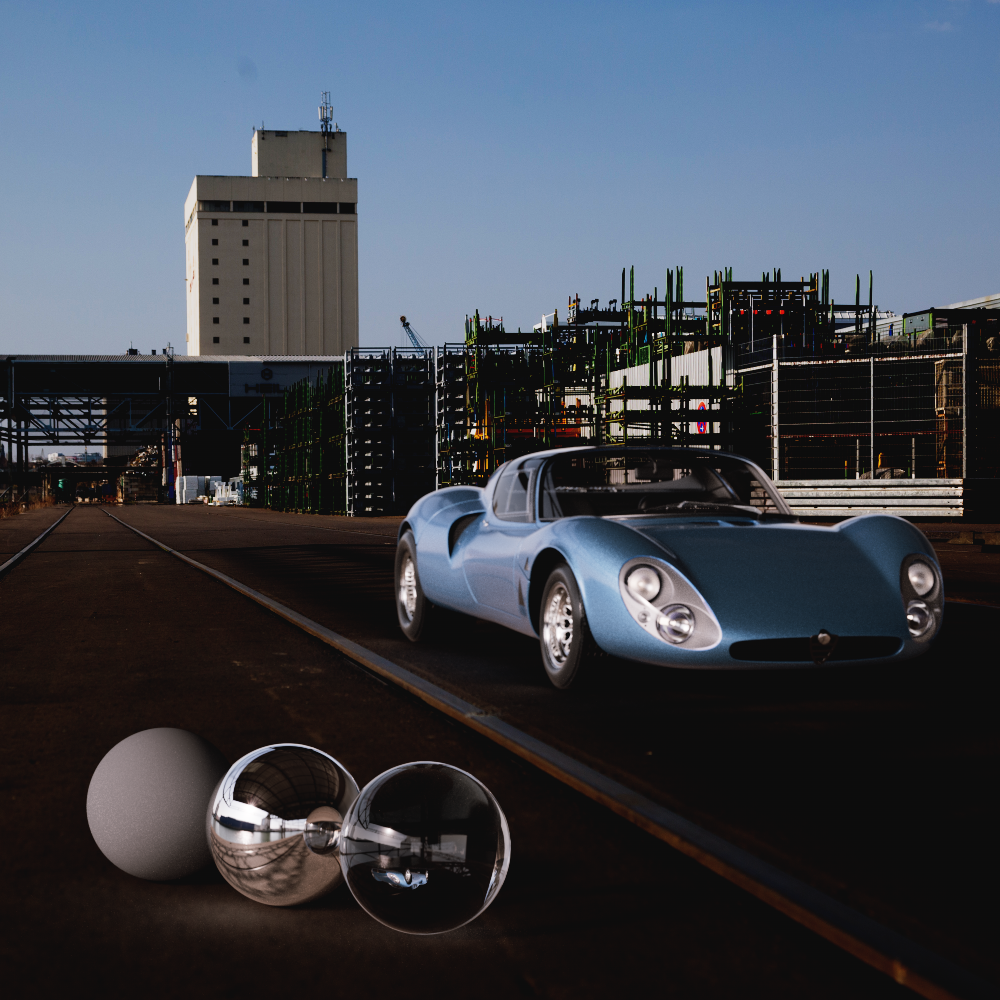
|
| Gamma: 0.5 | 1 (default) | 2 |
All brightnesses of the loaded Image can be raised or lowered evenly.
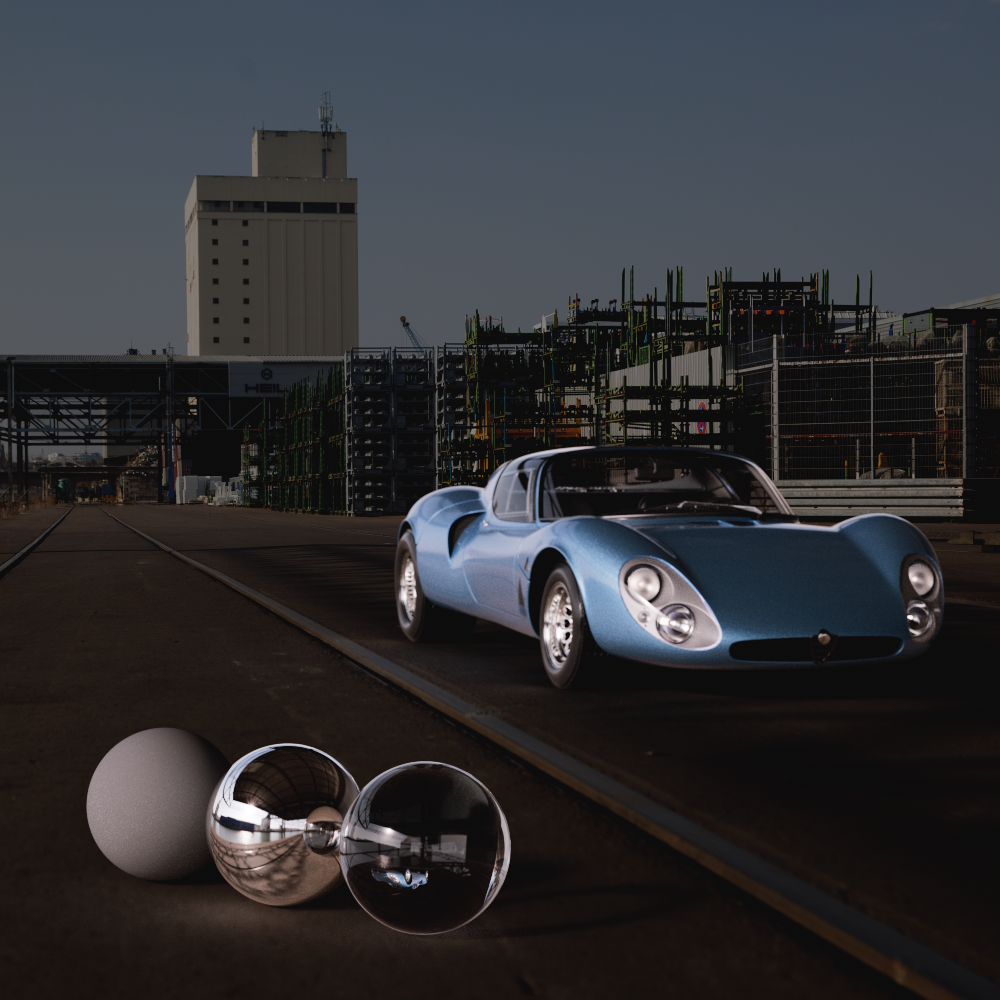
|
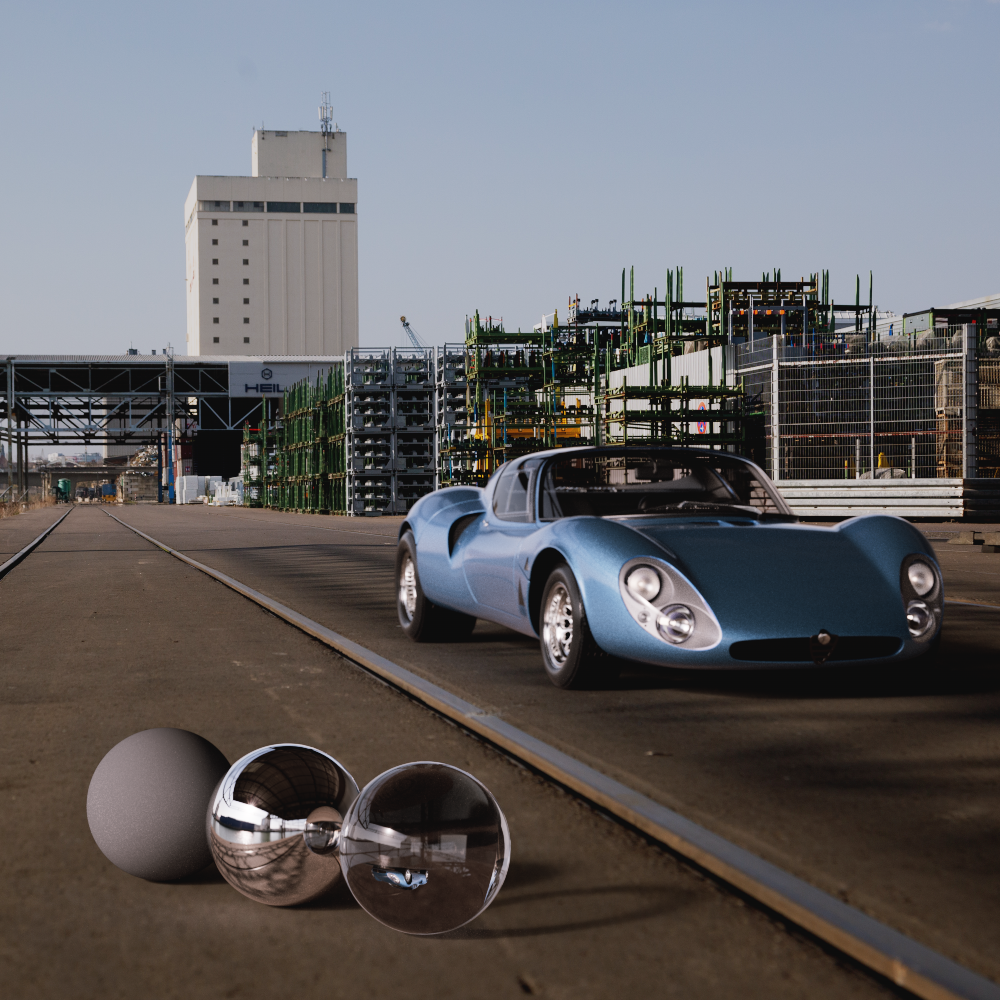
|
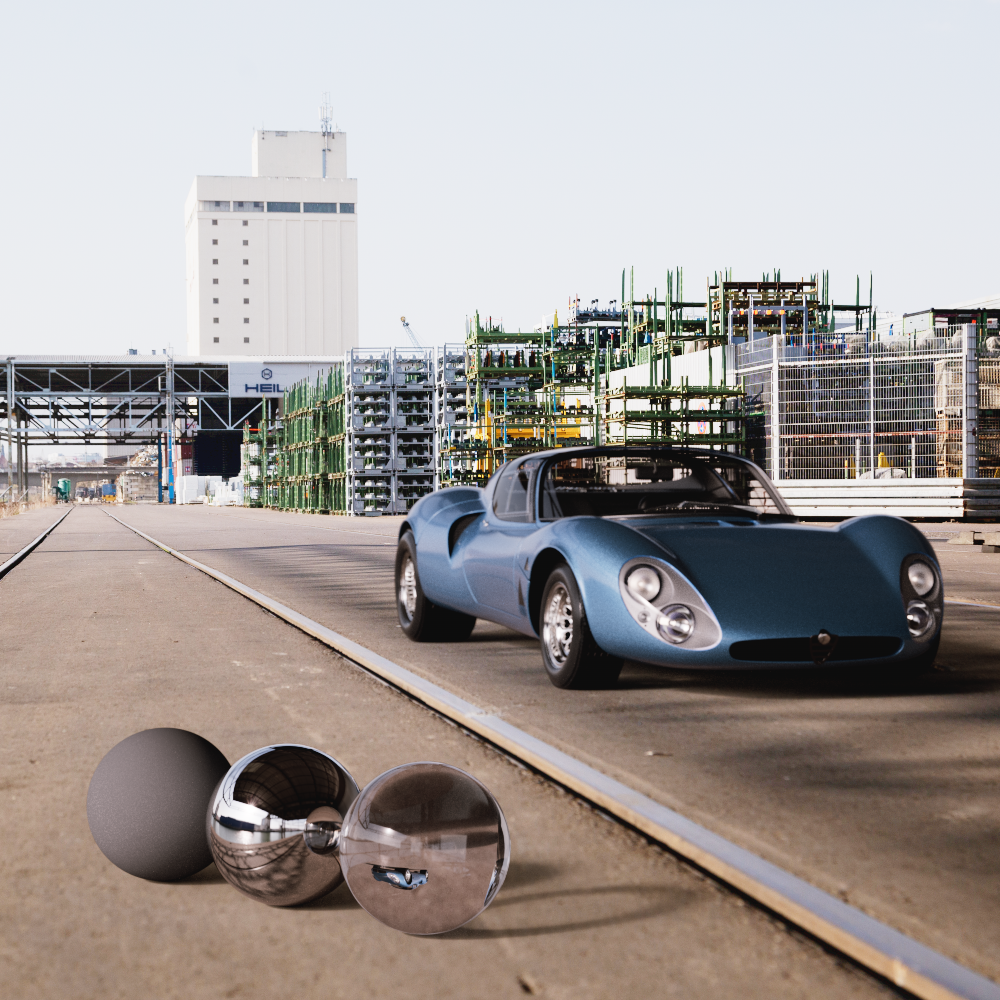
|
| Exposure: -2 | 0 (default) | 2 |
This allows all color values of the loaded Image to be shifted evenly. The basis for this is a color ring on which all colors are applied. The color shift can then be specified via an angle between 0° and 360°. For this reason, a color shift of 360° also shows the original color values again.
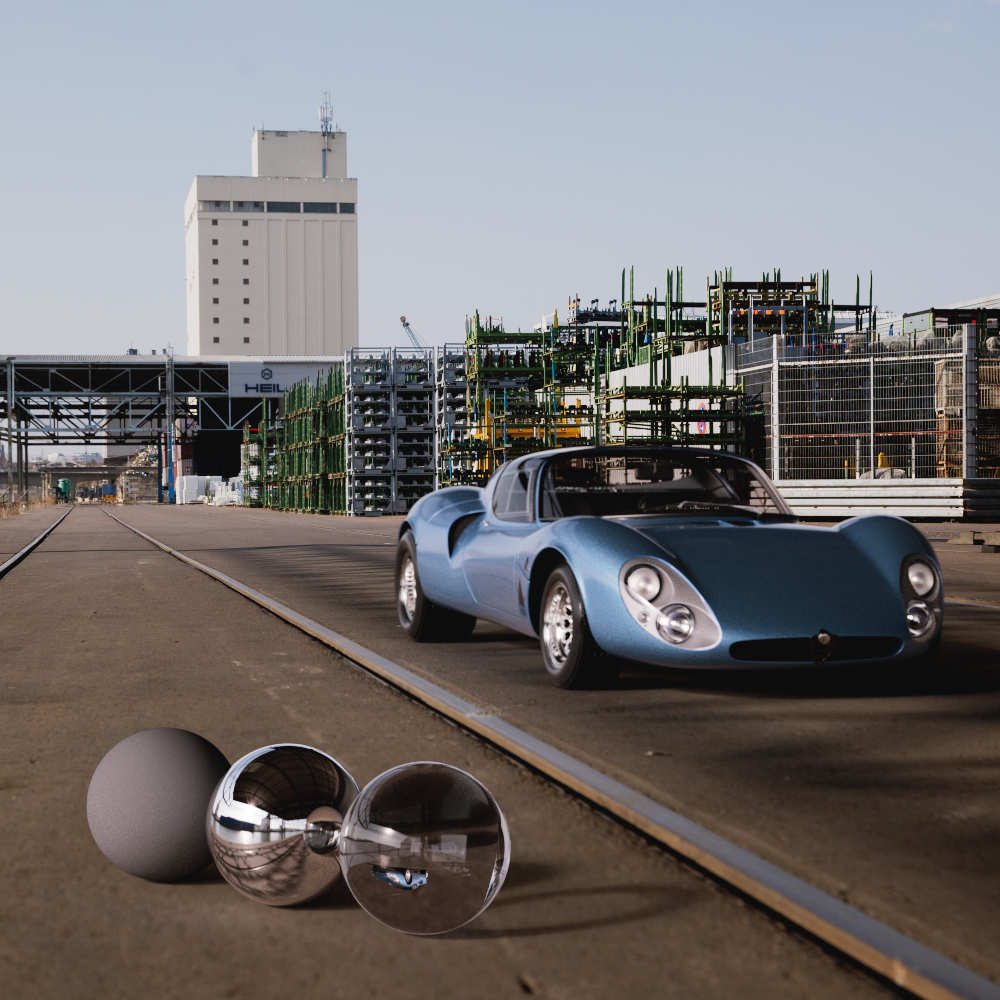
|
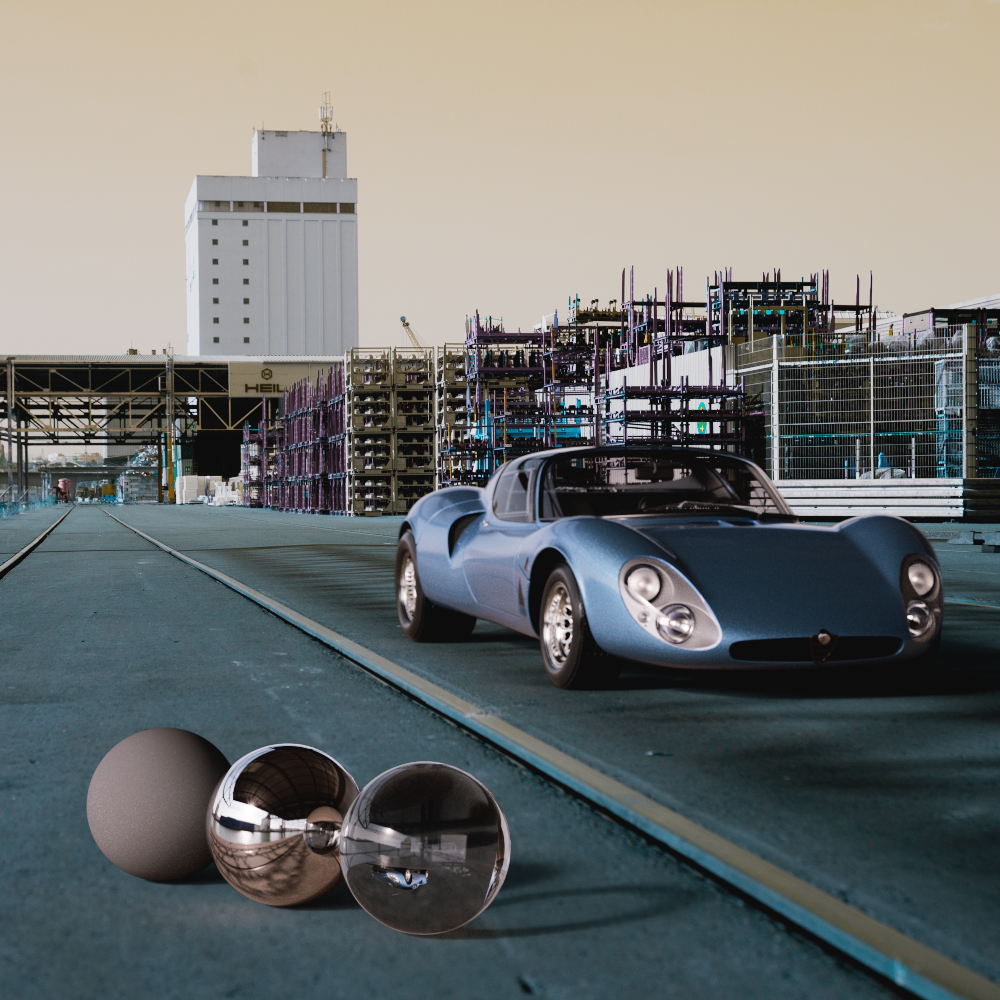
|
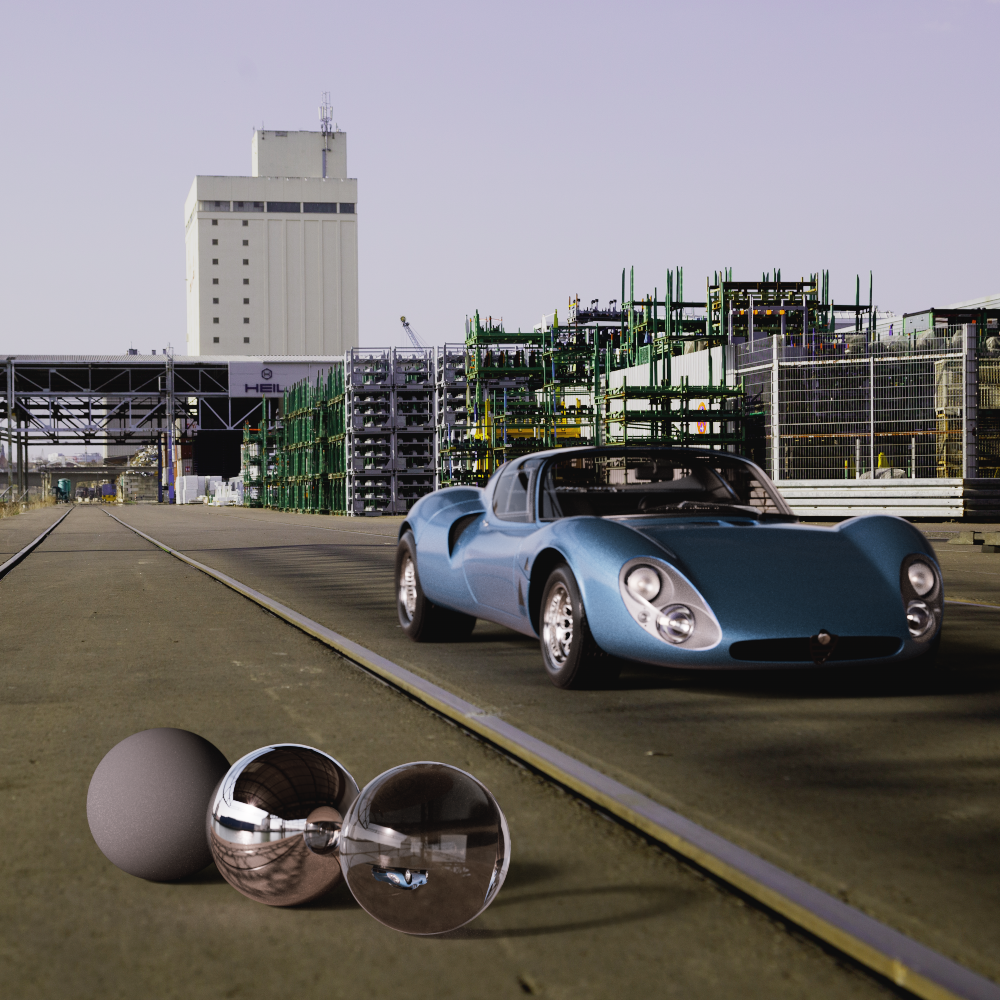
|
| Hue: 0 (default) | 20 | 180 |
Use this value to lower or increase the color saturation of the loaded background Image.
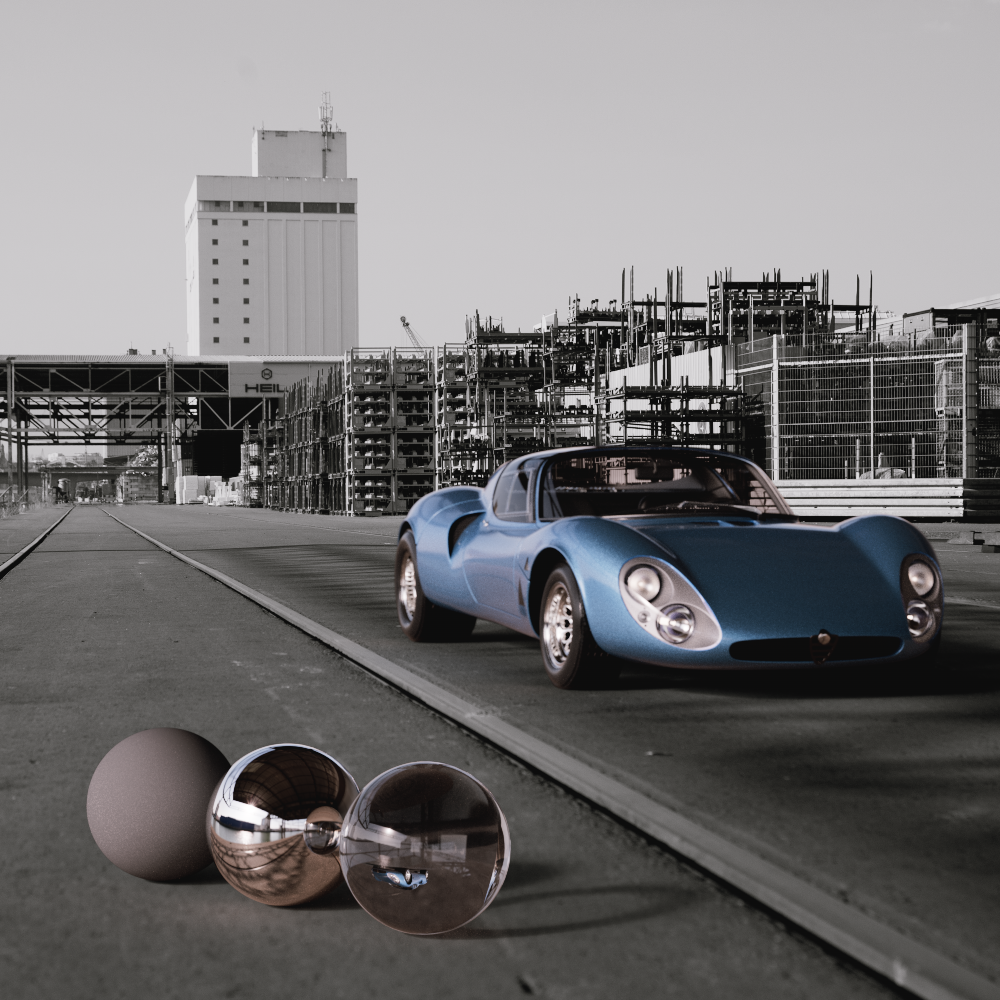
|
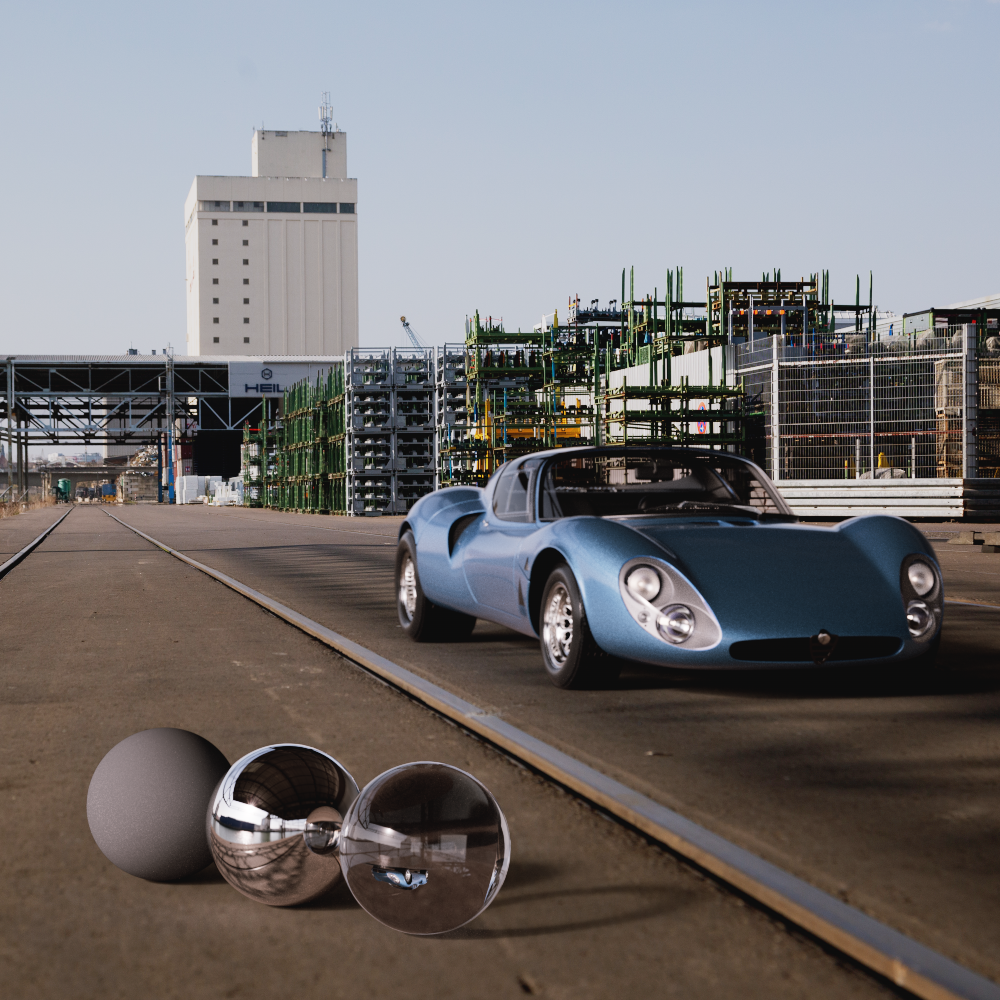
|
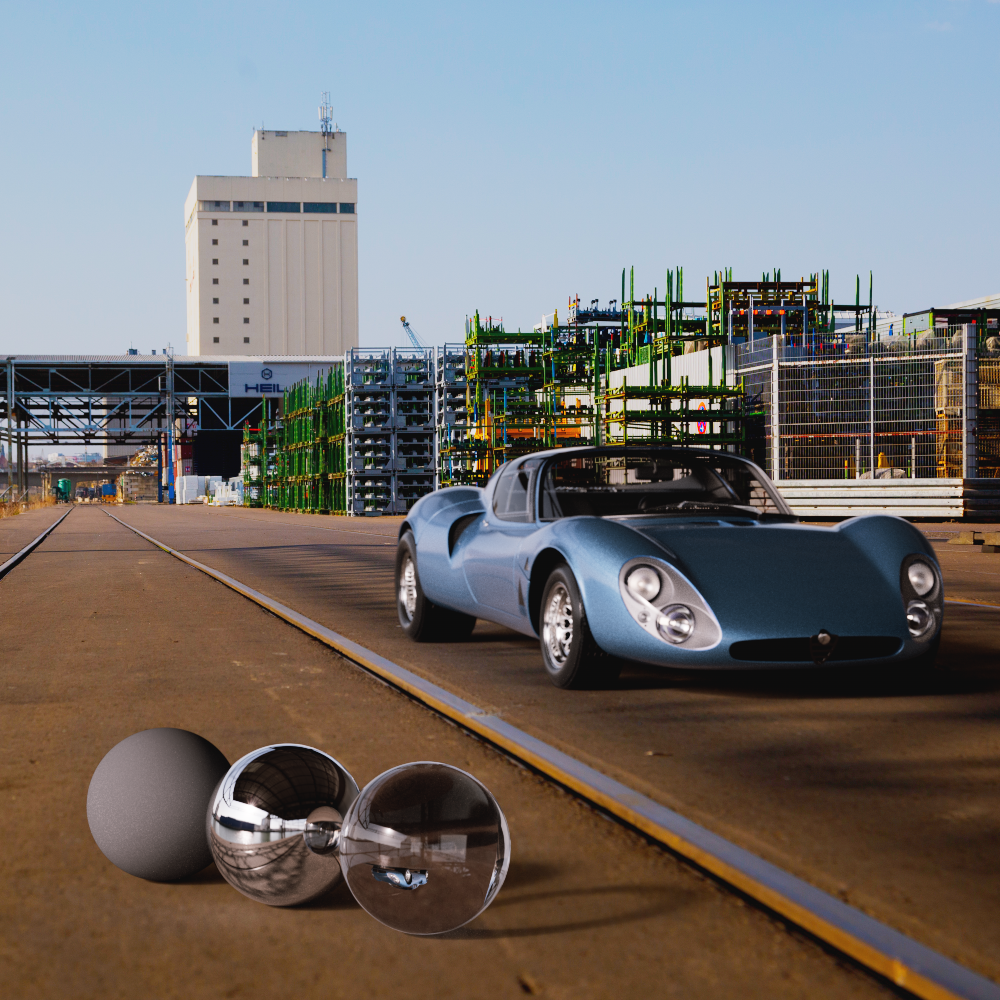
|
| Saturation: -100 | 0 (default) | 100 |
If this option is turned off, the loaded background image will also be affected by the camera's Exposure settings.
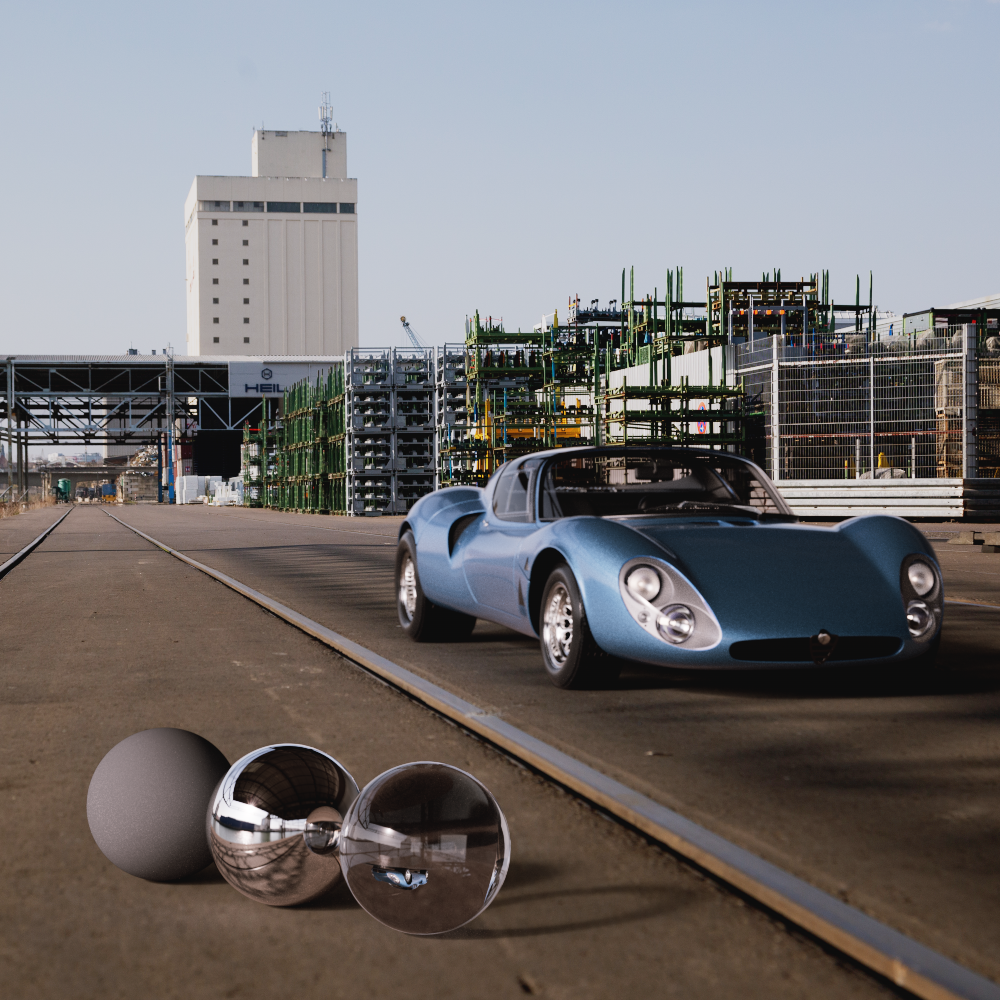
|
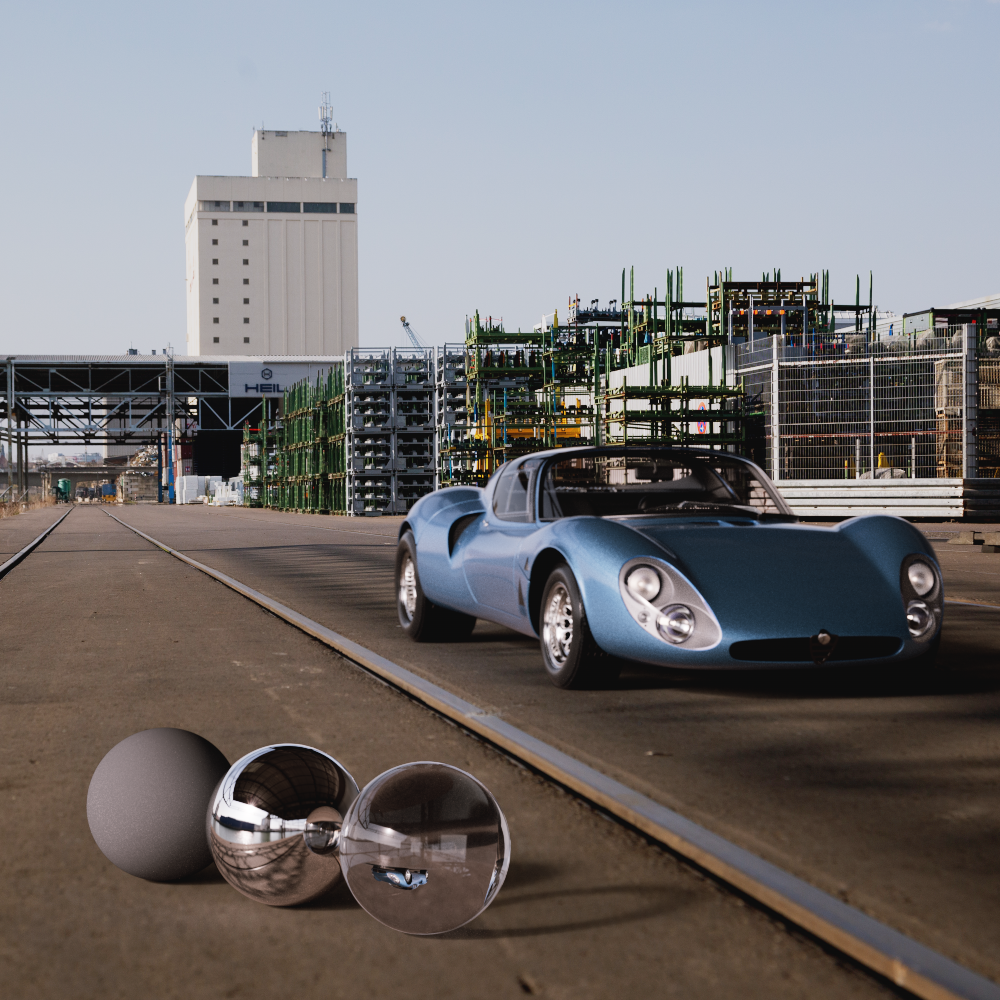
|
| Compensate for Exposure: Disabled (default) |
Enabled |